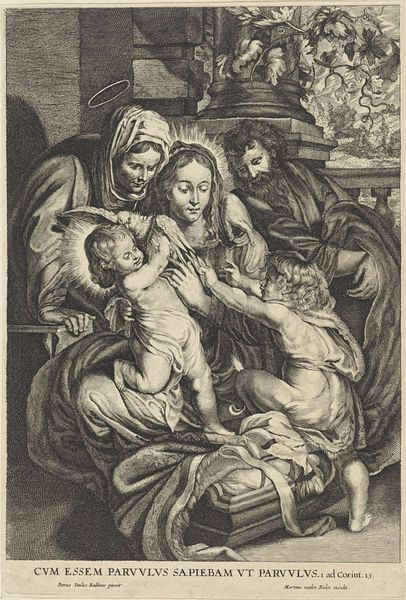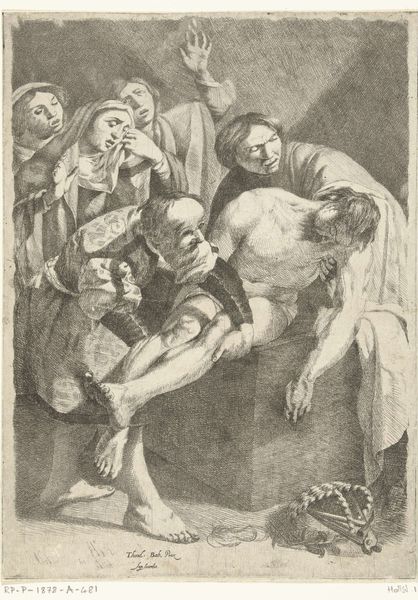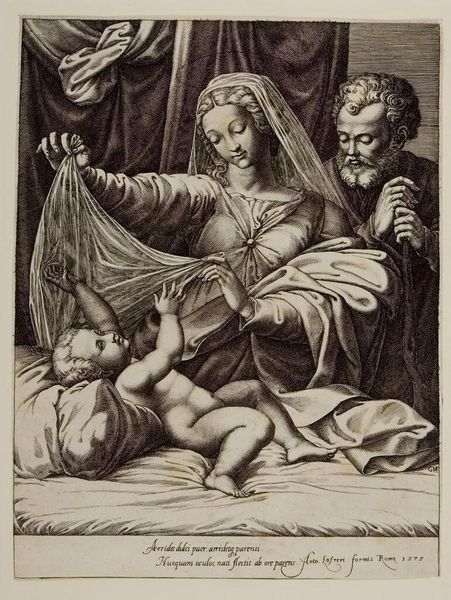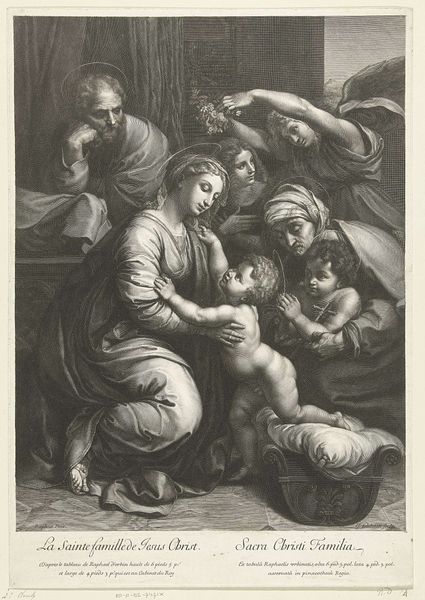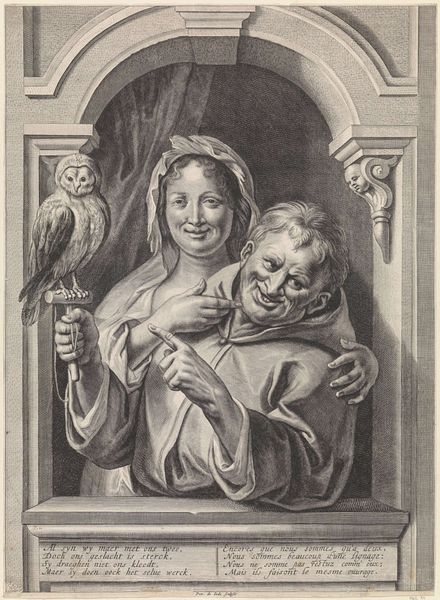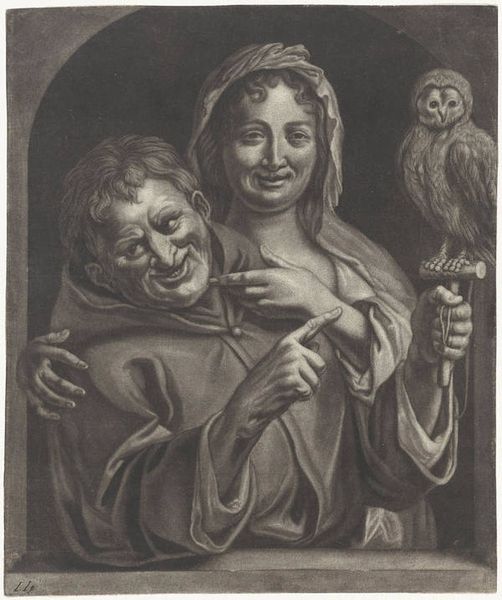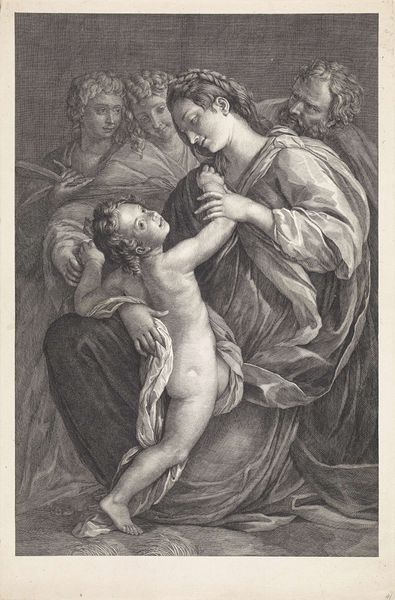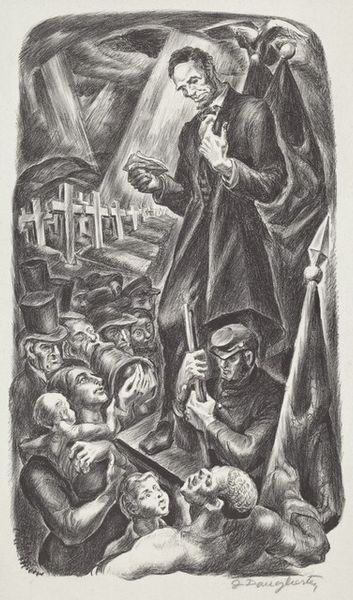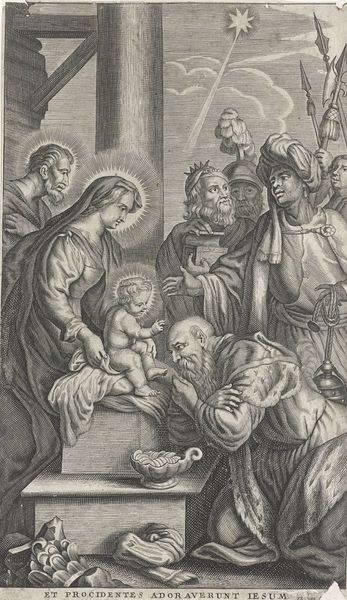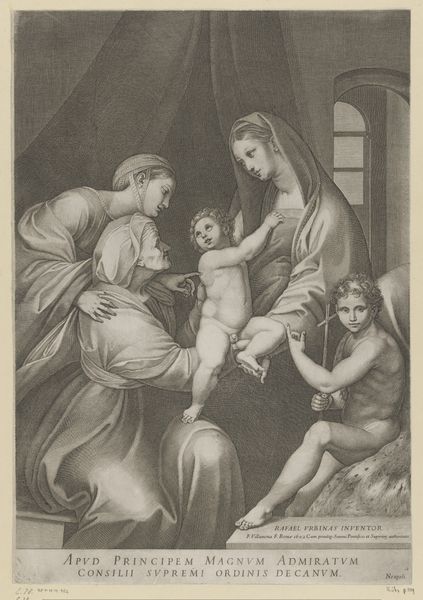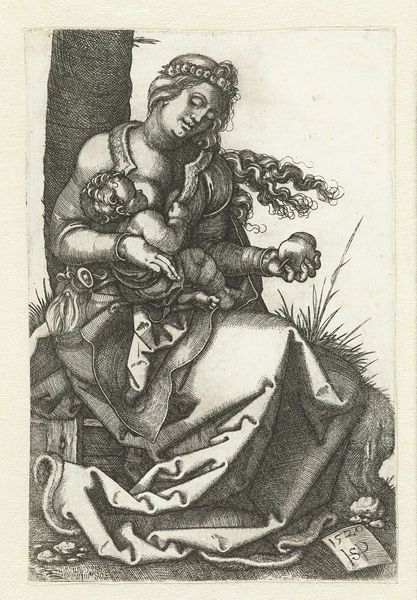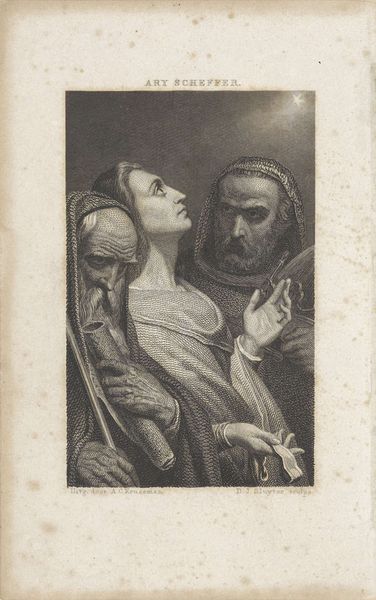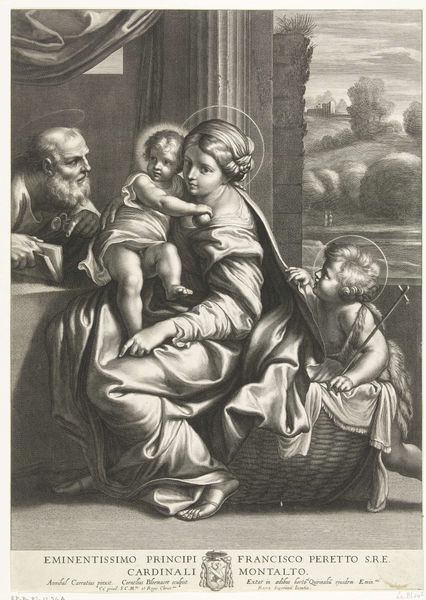
drawing, print, ink, graphite
#
portrait
#
drawing
#
narrative-art
# print
#
caricature
#
caricature
#
ink
#
group-portraits
#
graphite
#
genre-painting
#
realism
Dimensions: image: 416 x 225 mm sheet: 568 x 378 mm
Copyright: National Gallery of Art: CC0 1.0
Editor: Here we have Phyllis (Pele) de Lappe's "Street Scene," created in 1937, seemingly an ink or graphite print. I find the figures fascinating, they’re almost caricatures, and the expressions are so intense. What strikes you most about this work? Curator: What stands out for me is how De Lappe uses the group portrait to reflect a society grappling with immense socio-economic pressures. The late 1930s were marked by the Great Depression, and the figures – a nun, a glamorous woman, a working man, a shady character, and a child seemingly preoccupied with the news – suggest a spectrum of American society at the time. Do you think she is glorifying them or judging them? Editor: I see what you mean. I suppose I thought the exaggerated features made them satirical, maybe critical of their social roles. Curator: Exactly. It invites us to consider the artist's own political stance during a period of significant social unrest. Artists were often taking sides, and works like these could serve as commentary or even a call to action. Editor: It is interesting how what looks like just a caricature has more profound social meaning behind it. Are you suggesting she’s actively critiquing those in power, or... the power structures themselves? Curator: Possibly both. The nun, the well-dressed woman, and the man in the suit could symbolize institutions and figures maintaining the status quo, while the other figures suggest those more vulnerable within it. It provokes questions about societal responsibility during such times. The scale of reproduction, too, would have mattered - was this meant for mass consumption as propaganda, or for a smaller circle? Editor: That makes me see it very differently. So, it is less about the specific individuals, and more about what they represent within that historical and political landscape? Curator: Precisely. Examining art as a reflection of its time and the social forces shaping its creation offers a much richer understanding. Editor: Thank you for that insight; I appreciate understanding the deeper historical and political context that influenced the artwork. Curator: My pleasure. Seeing art through the lens of history helps us connect with the past and consider how its themes might still resonate today.
Comments
No comments
Be the first to comment and join the conversation on the ultimate creative platform.
